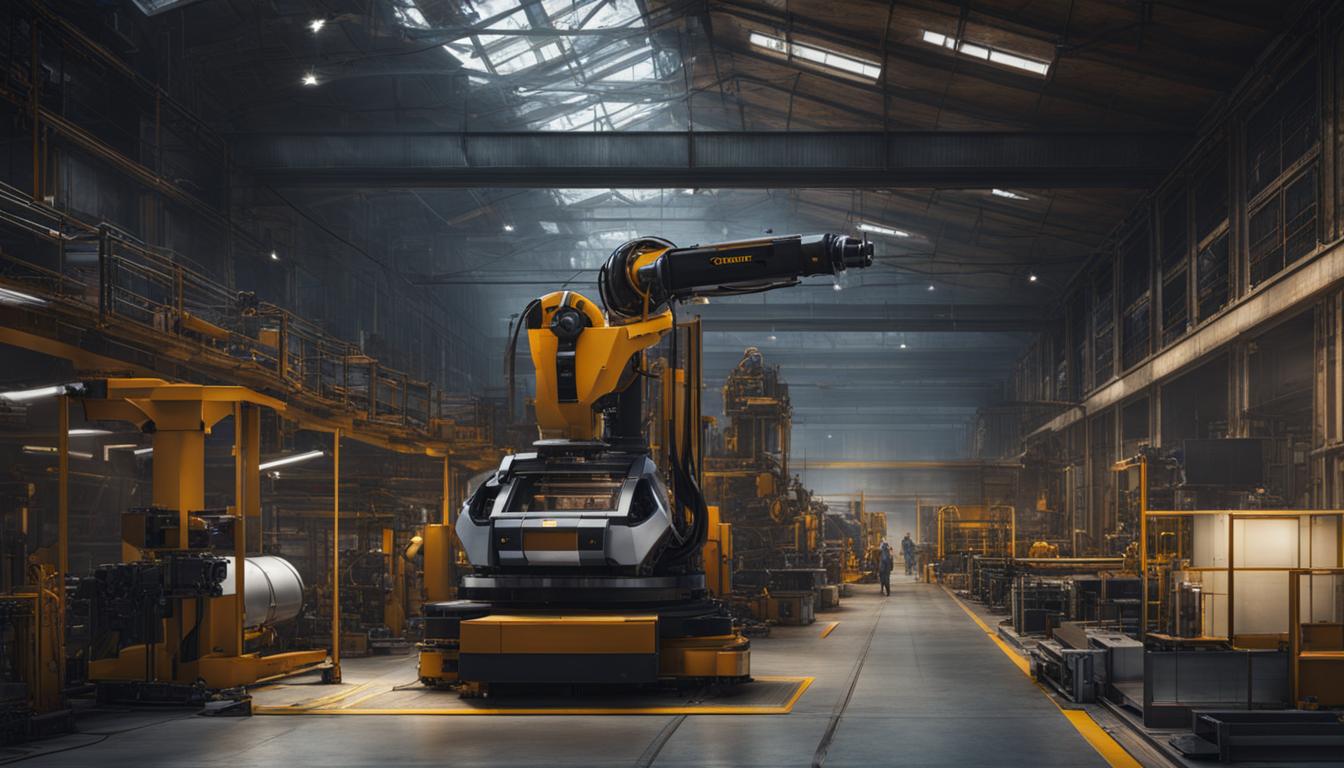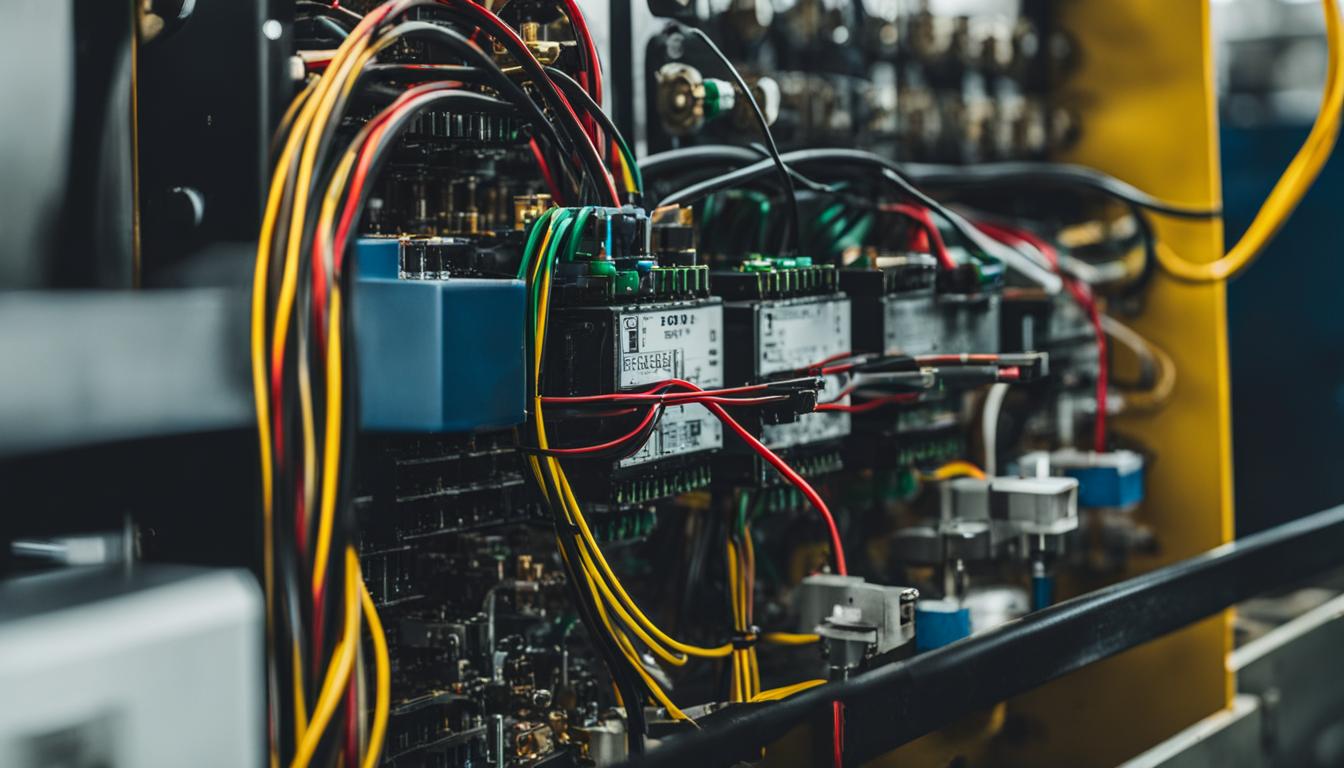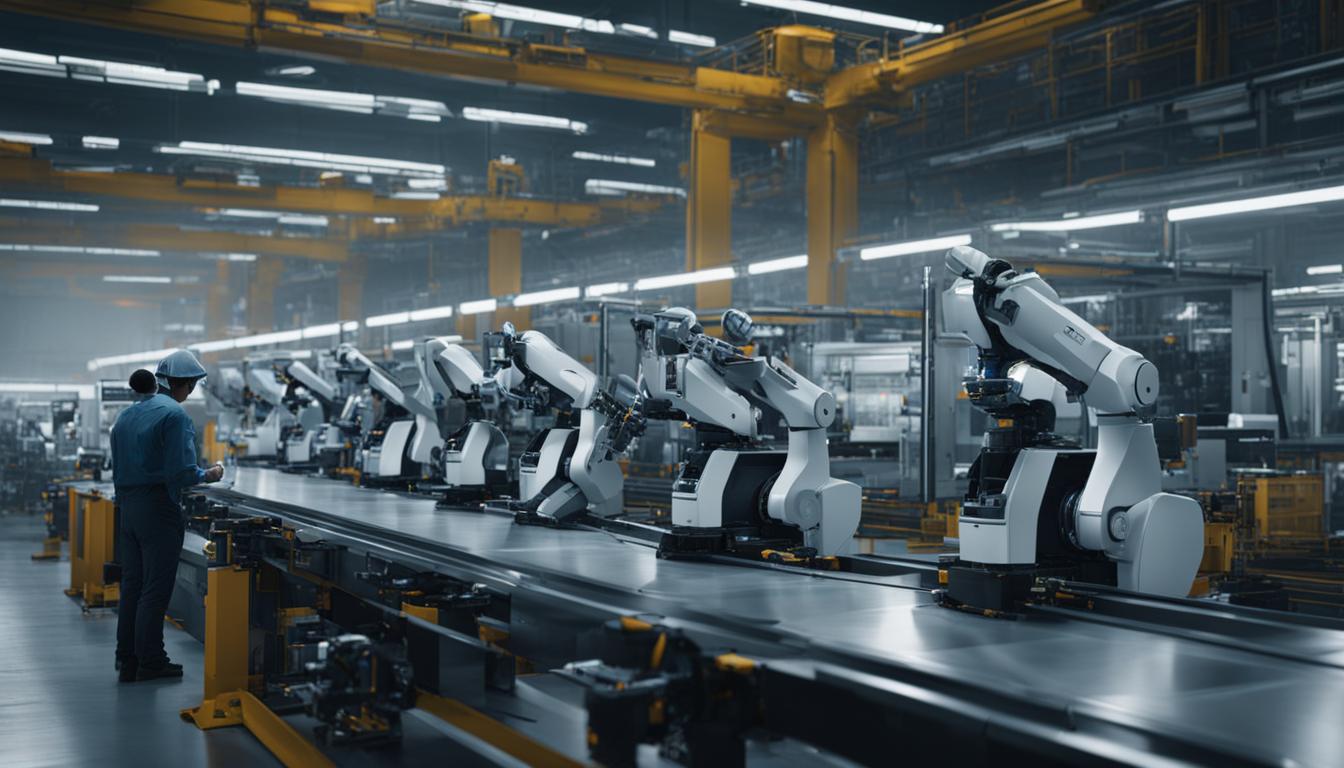Welcome to our comprehensive guide on CNC machine programming. In this article, we will explore the basics of CNC programming, delve into G-code fundamentals, and uncover advanced CNC software techniques. Whether you’re a beginner or an experienced CNC programmer, this guide will provide you with valuable insights to enhance your skills and optimize your machining processes.
Key Takeaways:
- CNC machine programming involves creating instructions for computer numerical control machines to produce parts or products.
- It can be done through manual data input (MDI) or by generating a digital file using computer-aided manufacturing (CAM) software.
- G-codes are critical for controlling machine movement, while M-codes control non-geometric actions.
- There are different types of CNC programming methods, including manual programming, conversational programming, and CAM programming.
- Understanding and utilizing essential CNC programming codes, such as G-codes, N-codes, S-codes, and T-codes, is crucial for effective CNC programming.
Understanding CNC Programming Basics
CNC programming is the art of writing instructions that drive CNC tools and machines. These instructions are essential for converting a 3D CAD model into machine-readable code that directs the machine’s movements and actions. By specifying the cutting tools, feed rate, and tool movements, CNC programming enables manufacturers to create intricate and precise parts.
The code used in CNC programming consists of different types of CNC codes, each serving a specific purpose. The most commonly used codes include:
| G-code | M-code | T-code |
|---|---|---|
| Geometry codes that control machine movement | Miscellaneous codes that control non-geometric actions | Tool codes that specify the tool to be used |
These codes work together to ensure the CNC machine tools accurately shape materials and create precise parts. G-codes control movements such as linear interpolation, circular interpolation, and rapid positioning. M-codes, on the other hand, handle actions like tool changes, spindle control, coolant control, and program stoppage. T-codes specify the tool to be used, ensuring the machine selects the appropriate cutting tool for each operation.
To illustrate the application of CNC programming, let’s consider an example. A CNC program may include the following commands:
G01 X50 Y25 F100
G02 X100 Y50 I25 J0
G03 X75 Y75 I-25 J0
M03
G01 X50 Y75
M05
In the above example, G01 is a G-code that instructs the machine to move in a straight line from the current position to the coordinates X50 and Y25 at a feed rate of 100 units per minute. The subsequent G02 and G03 commands control the machine’s movement along a circular path. The M03 and M05 codes control the spindle, turning it on and off.
By understanding the basics of CNC programming and the various codes involved, manufacturers can unleash the full potential of CNC machine tools and achieve exceptional precision in their machining processes.
The Power of CNC Programming Language
One of the strengths of CNC programming lies in its language, which is universally understood by CNC machines across different manufacturers. The G-code language, also known as CNC programming language, serves as a common language that ensures consistency in machine functionality and performance.
With the ability to precisely control tool movements and machine actions, CNC programming empowers manufacturers to optimize production processes, minimize errors, and enhance part quality. Whether it’s creating simple geometries or complex shapes, the CNC programming language provides the necessary instructions to streamline manufacturing operations.
Different Types of CNC Programming
When it comes to CNC programming, there are various methods that manufacturers can utilize. Each method offers its own set of advantages and considerations to take into account.
Manual CNC Programming
Manual CNC programming involves the manual entry of commands into the machine’s control console. This method is well-suited for simple parts and straightforward operations. However, due to the manual nature of data input, it can be time-consuming and prone to errors. Nonetheless, for smaller-scale projects, manual CNC programming remains a viable option.
Conversational Programming
Conversational programming offers a more user-friendly approach to CNC programming. It utilizes CNC machines equipped with built-in interfaces that enable users to enter commands in plain English. This method is particularly beneficial for simpler designs and enables operators to quickly and easily program the machine, reducing the learning curve associated with traditional programming languages.
CAM Programming
CAM programming, also known as computer-aided manufacturing programming, is a widely-used method in the industry. It involves leveraging specialized software to generate CNC programs. CAM software provides visual representations of tool paths, allowing programmers to analyze and optimize the machining process more effectively. By utilizing CAM programming, manufacturers can benefit from enhanced efficiency and precision in their CNC operations.
These different types of CNC programming methods offer manufacturers a range of options to suit their specific needs and requirements. Manual CNC programming, conversational programming, and CAM programming each have their own distinct advantages and considerations. By understanding these different approaches, manufacturers can select the most suitable method for their projects and optimize their CNC programming processes.
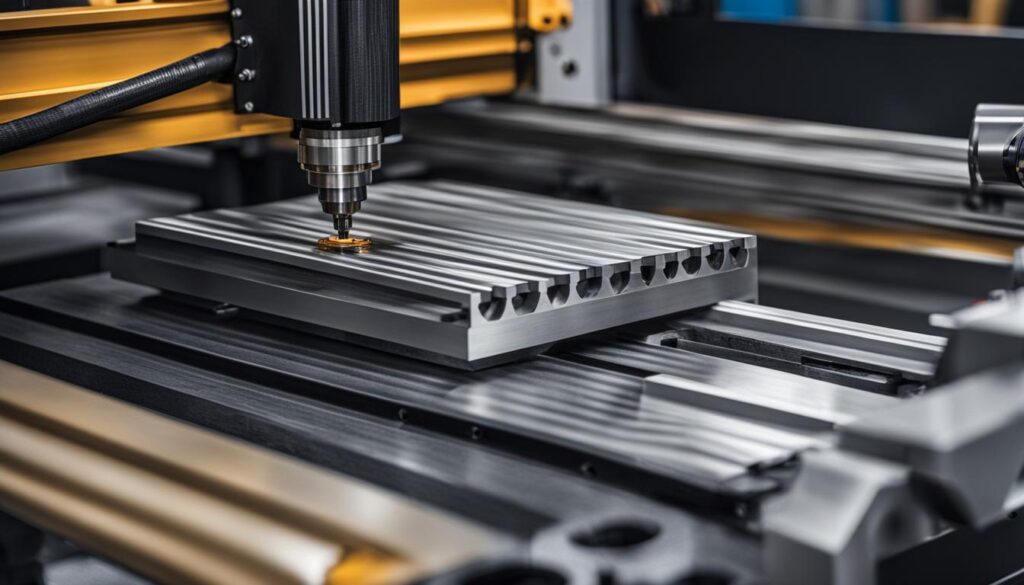
Note: Image depicts the visualization of tool paths in CAM programming.
Essential CNC Programming Codes
CNC programming relies on several key codes to control the actions of the machine. Understanding and utilizing these codes is essential for effective CNC programming. Let’s explore the essential CNC programming codes:
G-Code
The G-code is a fundamental CNC programming code that instructs the machine on how to move, where to start and stop, and how to position the tool. It defines the geometric movements, such as linear and circular interpolation, that the CNC machine should perform. G-codes play a critical role in shaping materials and creating precise parts.
M-Code
M-codes control non-geometric actions of the CNC machine. These codes are responsible for managing various machine functions, such as controlling the spindle speed, turning the coolant on or off, or activating auxiliary devices. M-codes ensure that the machine performs the necessary actions to produce the desired part.
N-Code
N-codes act as line labels, helping to organize the CNC program. They are used to mark specific points in the program, allowing the programmer to easily navigate and reference different sections. By using N-codes, CNC programmers can effectively structure and manage their code.
S-Code
S-codes determine the desired tool spindle speeds during machining operations. By specifying the appropriate S-code, programmers can control the rotational speed of the machine’s spindle. This ensures that the tool operates at the optimal speed, resulting in accurate and efficient machining.
T-Code
T-codes are used to specify the tool to be used during the machining process. CNC machines often have multiple tool stations or tool holders, and T-codes allow programmers to select the appropriate tool for each operation. By using T-codes, programmers can ensure that the correct tool is engaged, enabling precise and consistent machining.
F-Code
F-codes represent different feed rates, specifying the speed at which the tool moves along the programmed tool path. The feed rate affects the cutting speed and material removal rate, influencing the machining time and surface finish. By adjusting the F-code values, programmers can optimize the machining process for efficiency and quality.
D-Code
D-codes describe the tool offset, which is the difference between the tool’s actual position and the programmed position. Tool offsets account for factors such as tool wear and tool length, allowing for precise adjustment and compensation. By accurately setting the D-codes, programmers can achieve accurate and consistent machining results.
Incorporating these essential CNC programming codes, such as G-code, M-code, N-code, S-code, T-code, F-code, and D-code, enables programmers to exercise precise control over CNC machines and produce high-quality parts.
Now that we have discussed the essential CNC programming codes, let’s dive deeper into the different types of CNC programming methods in the next section.
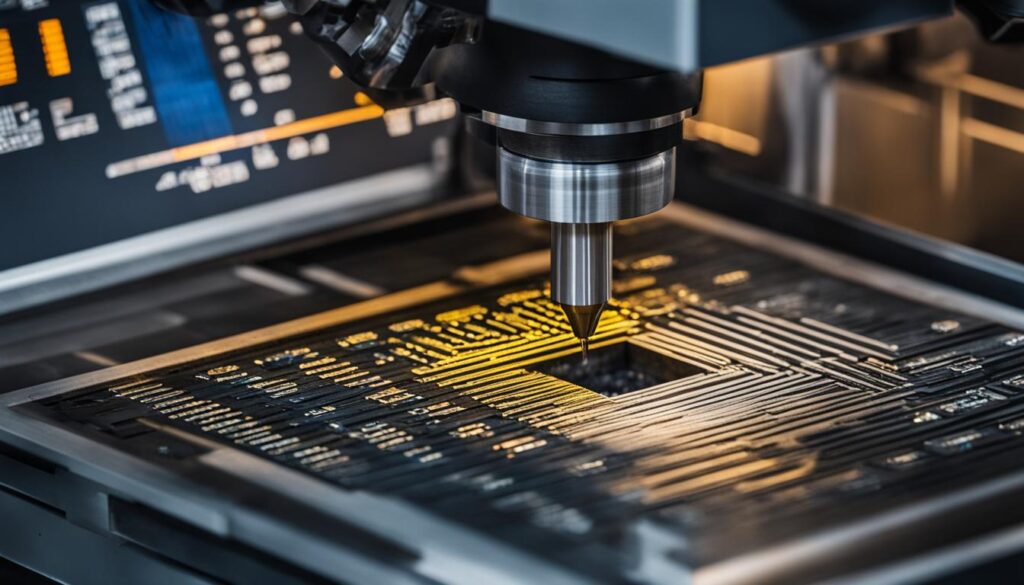
Conclusion
CNC machine programming plays a crucial role in the modern manufacturing industry. It empowers manufacturers to achieve remarkable precision and accuracy when producing parts. Whether utilizing manual data input, conversational programming, or employing computer-aided manufacturing (CAM) software, CNC programming grants efficient control over CNC machines.
Utilizing specialized CNC programming software, such as Mastercam, Vectric, Meshcam, Fusion 360, or Solidworks, is vital to optimize the programming process. These tools offer advanced features and functionalities that streamline the CNC machine programming workflow, enabling manufacturers to maximize productivity and achieve superior results.
By grasping the fundamentals of CNC programming and understanding the various codes involved, manufacturers can tap into the full potential of CNC machines. Learning the intricate language of G-codes, M-codes, N-codes, S-codes, T-codes, F-codes, and D-codes unlocks a world of possibilities for enhanced machining capabilities and improved part quality.
In conclusion, CNC software, CNC programming software, and a firm grasp of CNC machine programming basics are essential for manufacturers looking to excel in the highly competitive modern manufacturing landscape. Embracing these tools and knowledge allows for unparalleled precision, efficiency, and productivity in the realm of CNC machining.
FAQ
What is CNC machine programming?
CNC machine programming is the process of creating instructions for computer numerical control (CNC) machines to produce parts or products.
How is CNC machine programming done?
CNC machine programming can be done through manual data input (MDI) using the CNC machine interface or by generating a digital file using computer-aided manufacturing (CAM) software.
What is CAM software?
CAM software, such as Autodesk Fusion 360, allows manufacturers to create a digital file (NC program) that contains instructions for controlling the machine’s functions.
What are the types of CNC programming methods?
The types of CNC programming methods include manual CNC programming, conversational programming, and CAM programming.
What are the essential codes used in CNC programming?
The essential codes used in CNC programming include G-codes, M-codes, N-codes, S-codes, T-codes, F-codes, and D-codes.
Why is CNC machine programming important?
CNC machine programming is important because it enables manufacturers to achieve high precision and accuracy in producing parts.


